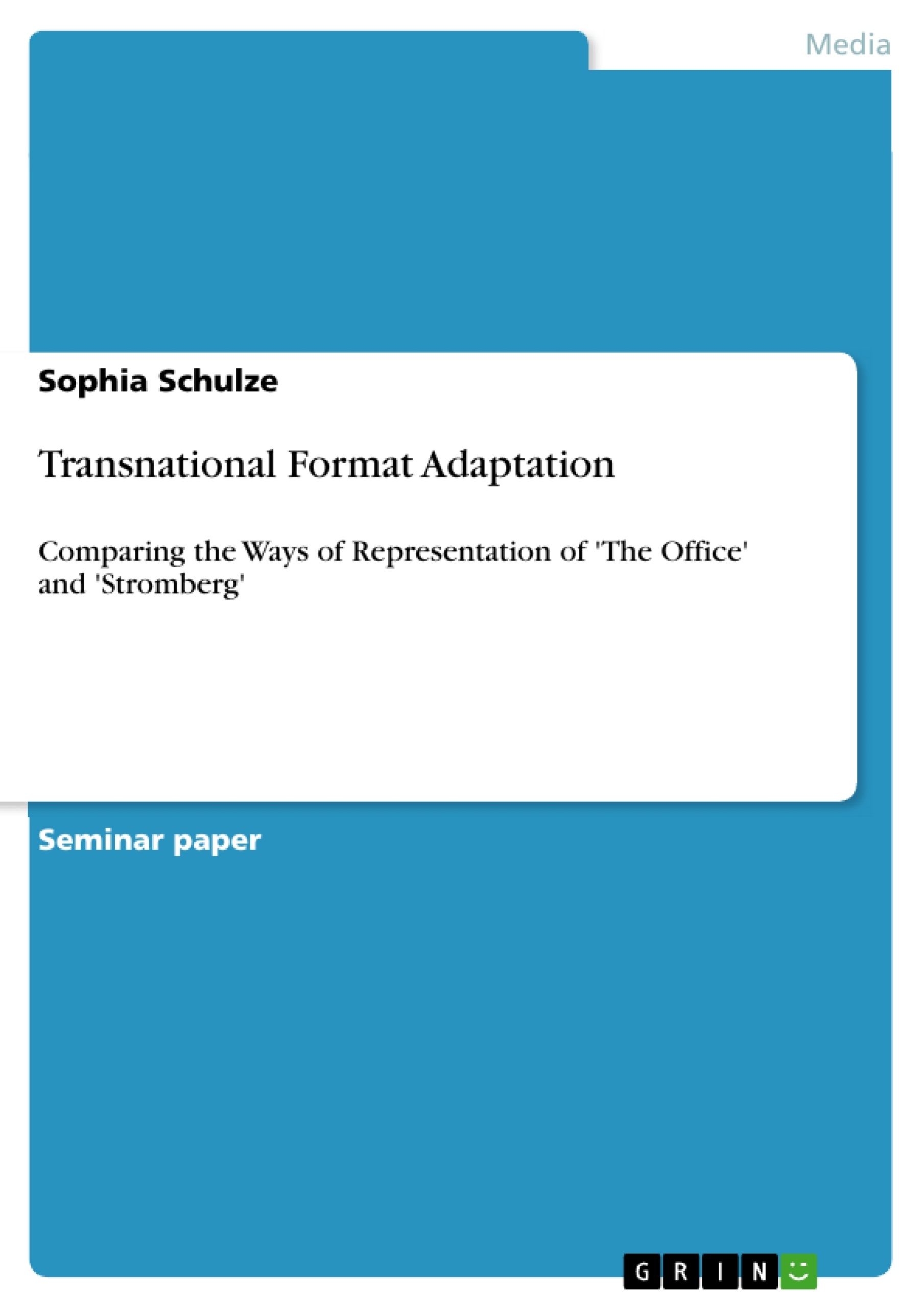Everyone who is familiar with the current television landscape can probably name at least one or two TV programs of which they know there are other versions of the same programs broadcasted in other regions of the world. To name only a few, there are quiz and game shows, such as Who Wants to Be a Millionare? or Wheel of Fortune, reality shows, such as Big Brother or The Bachelor, but also drama programs, such as Coronation Street or The Restless Years. Different versions of the same program often show striking similarities in their basic structure, they might have similar narratives and characters, or even convey the same values; yet they have a local coloring from the region where they are produced through local participants or actors, plotlines based on local problems or local cultural references. This is caused by the fact that the different versions of one program stem from the same format that originated in one cultural environment, was taken over into other regions and adapted to the local backgrounds. This process of deterritoralizing TV formats by using a foreign format and producing a local version of it is called transnational TV format adaptation.
The reason why there is an increase in transnational format adaptations and why consumers are aware of that is because of the continuing globalization of media communication, meaning the advanced exchange of products, practices and ideas through progressive technology (Hepp 2006: 9f.). While being a result of globalization, however, format adaptations are produced in local contexts “integrating ‘local’ content in various ways” (Machin/Leeuwen 2007: 1f.). By combining parts of different cultures they are neither completely global nor local products but rather examples a transnational media landscape (cf. Jensen 2007: 5, 13). Although “the prac-tice is not new and can be traced back to the radio”, research focused more on transnational program sales or co-productions, and format adaptation has only come to the center of atten-tion in research in the past 15 years (see Moran 1998, Moran/Malbon 2006, Jensen 2007).This is why this topic has aroused my interest and will be the topic of this paper.
Inhaltsverzeichnis (Table of Contents)
- Introduction
- Definitions: (Transnational) Television Formats and the Circuit of Media Culture
- Transnational Format Adaptations in the "Circuit of Media Culture"
- Production: Globalization and Format Trade
- Representation: Cultural Imperialism vs. Diversity
- Appropriation: Identification with Local Aspects
- Case Studies: Comparison of the Representation in The Office and Stromberg
- Genre and Format
- Narrative Structures and Background Information
- Methodology
- Comparison of the Pilot Episodes in Seven Categories
- Storyline
- Setting and Workplace Culture
- Characters and Constellations
- Linguistic Aspects
- Cultural References and Intertextuality
- Political Correctness and Discrimination
- Humor
- Conclusion
- Sources
- Appendix
Zielsetzung und Themenschwerpunkte (Objectives and Key Themes)
This paper examines the process of transnational format adaptation, focusing on how original formats are translated and adapted to different cultural contexts. The main goal is to analyze the similarities and differences in the representation of two different versions of the same format. The paper investigates how the adapted version incorporates elements from the original and how it hybridizes them with local content. Key themes include:- Transnational format adaptation
- Globalization and media communication
- The “circuit of media culture”
- Cultural imperialism and diversity
- Adaptation and hybridization of cultural elements
Zusammenfassung der Kapitel (Chapter Summaries)
- The introduction defines the concept of transnational format adaptation and introduces the research question. It also establishes the "circuit of media culture" as a framework for analyzing the process.
- Chapter 2 provides definitions of television formats, format adaptation, and the "circuit of media culture." This chapter establishes a conceptual basis for understanding the complex processes involved in transnational format adaptation.
- Chapter 3 delves into the three levels of the "circuit of media culture" – production, representation, and appropriation – in the context of transnational format adaptations. The chapter focuses on the level of representation, as this is the level used to compare the two case studies.
- Chapter 4 presents the case studies: The Office (UK) and its adaptation Stromberg. This chapter discusses the genre and format of both versions, provides background information about their production and success, and details the methodology used for the analysis.
- Chapter 5 compares the pilot episodes of The Office (UK) and Stromberg across seven categories: storyline, setting, characters, linguistic aspects, cultural references, political correctness, and humor.
Schlüsselwörter (Keywords)
This paper focuses on the process of transnational format adaptation, examining the globalization of media communication and the cultural exchange that occurs when formats are adapted to different contexts. The paper analyzes the "circuit of media culture" framework and its application to format adaptations, exploring the concepts of cultural imperialism and diversity, as well as the process of hybridization. Key concepts also include representation, adaptation, and the differences and similarities observed in the representation of two versions of the same format.- Quote paper
- Bachelor of Arts Sophia Schulze (Author), 2012, Transnational Format Adaptation, Munich, GRIN Verlag, https://www.grin.com/document/270968




